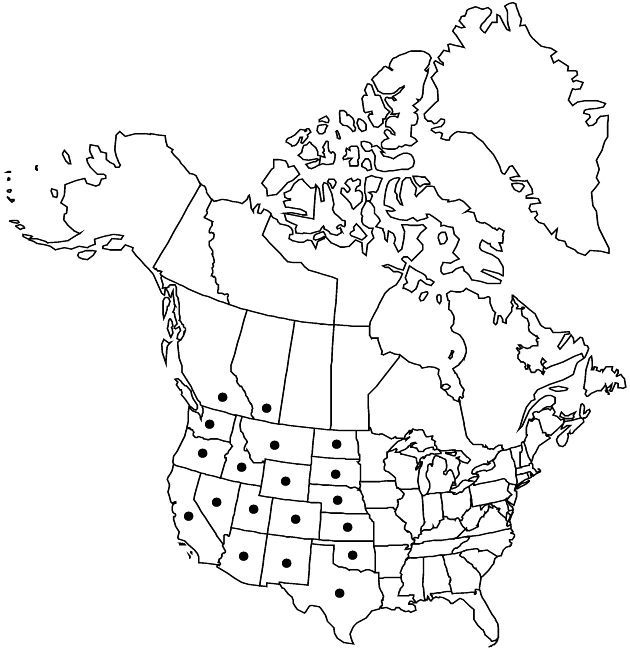Erigeron flagellaris
Mem. Amer. Acad. Arts, n. s. 4: 68. 1849.
Biennuals or short-lived perennials, 3–15 cm; usually fibrous-rooted, sometimes taprooted, caudices lignescent, rarely branched. Stems first erect (greenish proximally; usually single, simple), then producing herbaceous, leafy, prostrate runners (usually with rooting plantlets at tips, populations often becoming clonal mats), strigose (often sparsely; hairs antrorsely appressed, consistent in orientation), sometimes slightly glandular distally. Leaves basal (often persistent) and cauline; basal blades broadly oblanceolate to elliptic, 20–55 × 3–9 mm, cauline abruptly reduced distally, margins entire or dentate, faces strigose, eglandular. Heads 1 (–3, on proximal branches). Involucres 3–5 × 6–13 mm. Phyllaries in 2–3 series, strigose to loosely hirsute, minutely glandular. Ray-florets 40–125; corollas white, often with an abaxial midstripe, often drying lilac, 4–10 mm, laminae not coiling or reflexing. Disc corollas 2–3.5 mm. Cypselae 0.8–1.3 mm, 2-nerved, faces sparsely strigose; pappi: outer of setae, inner of 10–17 bristles. 2n = 18, 27, 36, 45, 54.
Phenology: Flowering May–Aug(–Sep).
Habitat: Meadows and grassy slopes, often moist, open areas in grasslands, pinyon pine, oak-pine, pine, aspen, and spruce-fir
Elevation: (1700–)2100–3600 m
Distribution

Alta., B.C., Ariz., Calif., Colo., Idaho, Kans., Mont., Nebr., Nev., N.Mex., N.Dak., Okla., Oreg., S.Dak., Tex., Utah, Wash., Wyo., Mexico
Discussion
Early season forms of Erigeron flagellaris may consist of a basal rosette and a single, erect, scapiform, monocephalous stem; leafy runners usually develop quickly. Many polyploids of this species are indistinguishable from diploids; some polyploids have features suggestive of genetic influence of E. tracyi.
Selected References
None.